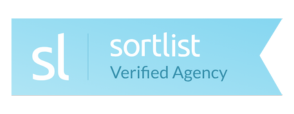
In 2015, the average business was subscribed to around 8 SaaS applications. In the ten years since, SaaS usage has exploded and according to the most recent statistics, businesses pay for close to 112 SaaS applications on an average.
The massive upsurge in consumption of SaaS apps is not necessarily a bad thing. Ten years back, social media marketing was largely restricted to Facebook. Today, businesses need these apps to be able to produce and manage marketing activities across Facebook, TikTok, Instagram, WhatsApp, and LinkedIn.
Without these SaaS apps, social media marketing would be a resource-intensive activity.
Having said that, the SaaS sprawl in social media marketing is real. There are several reasons why organizations end up with a bloated repository of SaaS applications within their organization.
Decentralized procurement
Most organizations have granularized P&L across different departments and teams. While this gives each team the freedom to pick and choose the way they want to carry out their processes, it could lead to uncontrolled usage of SaaS apps since different teams could be using the same or different apps to perform the same tasks.
Poor research
Modern SaaS tools are quite powerful and are equipped with multiple features. For example, although Buffer made its mark as an Instagram scheduling tool, it is today capable of handling social media management across several channels, including YouTube, Mastodon, Bluesky, TikTok, and LinkedIn.
Without proper research of these tools, it is easy to be caught in the marketing campaigns of these different tools and invest in separate tools for these different social media channels.
Lack of budget
If you are a small organization without a large software budget, then teams invariably go through the need to invest in multiple SaaS apps to stay within the respective free-tier limits. While this allows such teams to save money in the short-term, it hampers productivity which is essentially the reason businesses use these tools in the first place.
How does SaaS sprawl affect social media marketing
Creator Partnerships Lead at PrimePutt, Kevin Lee says: “Deploying too many SaaS tools for social media doesn’t just waste budget—it fragments your strategy, scatters your data, and slows down your team.”
SaaS sprawl leads to disjointed campaigns, duplicated costs, and missed opportunities to actually connect with your audience
Inefficient workflow
When you have multiple tools to execute your social media campaigns, it becomes necessary to configure and set up campaigns in each of these tools individually. This causes duplication of effort which brings down productivity, and is highly inefficient.
Lack of oversight
SaaS sprawl in a social media marketing setup usually happens when you have different members of your team in charge of various channels like Instagram, TikTok, and Facebook.
Without a centralized dashboard to handle different channels, there could be less synergy in the posted content which again, affects your social media ROI.
Unscalable
SaaS sprawl in social media marketing is manageable as long as you are a small team. However, according to Jason Vaught from SmashBrand, as your team grows, this could turn out to be a huge bottleneck since there are no common work processes in place for your campaigns.
Inaccurate reporting
Most modern social media management tools come with their own analytics suite. There is a subtle difference in the way these different tools track data. This could contribute to inaccurate reporting – making it difficult for marketers to make informed decisions based on these reports.
Methodical approach to avoiding SaaS sprawl in Social media marketing
SaaS sprawl in any form is a drain on productivity and expenses, and ideally should never exist. However, curbing SaaS sprawl should not be at the cost of limiting your teams’ freedom in pursuing what’s best for their targets.
Here is a methodical approach to avoiding SaaS sprawl in social media management. While this article will focus specifically on this category, you could repurpose these ideas to any other department or business function.
Identify your current ROI
Does your organization suffer from SaaS sprawl? This is not an easy question to answer since your teams will vehemently defend their reason to pick a particular app for their marketing activities.
Yet, one of the best ways to know if your organization suffers from SaaS sprawl is to look at the ROI of your social media marketing activities. Does an increase in spend on SaaS tools have a visible impact on the returns?
If you are not seeing noticeable increase in returns despite an increase in your SaaS budget, then it is clear that these additional tools are not meaningfully contributing to your goals.
But unlike other forms of marketing, measuring ROI with social media activities is tricky. The first step to measure ROI is to understand the goals you are pursuing.
Are you seeking brand awareness or quantifiable metrics like sales? If it’s brand awareness, how do you measure that? Is this through post impressions, or engagement?
According to ZenBusiness, translating social media activities into quantifiable goals is the first step in understanding the returns you get from them.
Once you have measured these returns, the next step is to track SaaS usage. There are two ways to do this – measure the number of different SaaS apps used in your social media activities, or by the cumulative spend on these various apps.
Although, it is common sense to assign a pound value to your investment, in this case it’s important to calculate ROI in both ways.
ROIsprawl = Measured returns
Number of Saas apps
ROIpound = Measured returns
SaaS spend
The reason we calculate these two different forms of ROI is because SaaS sprawl is both a productivity and profit killer. Tracking both these metrics is thus important to eliminate overuse of SaaS apps in your social media marketing campaigns.
Audit your SaaS spend
The next step in the process is to audit your SaaS spend. Please note that I am using the term “spend” a bit loosely here.
As already noted previously, we are not only concerned about the financial drain caused by SaaS sprawl, but also the drain on productivity. So, ‘spend’ in this case would refer to both the money spent, as well as the time spent on these various tools.
Calculating the money spent is quite straightforward – list down all the SaaS apps that your social media team pays for, and add the costs up.
To calculate the time spent, first build a master list of SaaS apps – both paid and free, and build a pie-chart based on usage. You may notice that a lot of time may be spent on free-tier plans of various apps that may not be accounted for while calculating SaaS spend.
An important point to note here: although this article is about SaaS sprawl in the social media marketing space, it is important to perform the following steps for all of your business activities in one go. This is because your business activities are interlinked, and there are SaaS apps that cater to multiple functions and channels. It is futile trying to avoid SaaS sprawl in just one function while not auditing the same for other parts of your business.
Build a Process masterlist
Before we start working on decluttering your SaaS shelf, it is vital that you build a masterlist of all the tasks and processes you follow across all of your business activities. This is not necessarily restricted to your social media marketing activities, but also other related product and marketing functions.
For instance, you may need to identify all the activities that your email marketing team does, or the different attributions and events that your Product team tracks. Knowing this is critical to identifying the right tools to retain, and those that you can let go of.
Build a SaaS masterlist
Avoiding SaaS sprawl is not just about minimizing the use of SaaS apps while meeting your targets. It is also about identifying the opportunity cost in going with one app while letting go of another.
Tools like Planable could help with social media management on multiple social media platforms, and you may find it more encompassing than tools that focus on just one or two social channels.
To get it right, it is important to build a masterlist of all SaaS apps that your business may need. This is not just the list of apps that you already use or have used in the past, but also all the competitor apps that you could potentially use.
You may also consider using one of the free subscription trackers to avoid unused licenses and redundant subscriptions.
Perform an App-Process mapping
Once you have the list of business processes and the SaaS masterlist ready, the next step is to map each SaaS app against the list of processes that it can fulfil. For example, you may be paying for the Hootsuite Advanced plan to make use of its Analytics features for your Instagram campaign. However, your marketing team may already be using AppsFlyer to attribute and track the various mobile marketing campaigns.
In this case, it would make sense to pick a cheaper tool for your social media scheduling and instead use AppsFlyer to track performance of your Instagram marketing.
At the end of this step, you will have a short list of apps that you need to keep all your business processes going.
Rework SaaS ROI
Once you have mapped each of the SaaS apps with all the processes they can handle, the next step is to work out various combinations of apps that you can deploy to perform all business processes.
Work out the cost of deploying this SaaS stack, and also track the number of different apps you will be deploying with each of these combinations.This will help you identify the potential ROIsprawl and ROIpound of these different alternate stacks.
Pick the stack that offers the highest ROI compared to the current value. However, it is important to note that the user experience offered by these new apps may not necessarily be the same or better than your current stack of SaaS apps.
Hence, before you make the shift, consult with your team, as well as the other teams to ensure that this move will ensure higher productivity. You may find it beneficial to let your teams play around with the new apps before you commit to the migration.
Build new approval process
While the above steps may help solve your SaaS sprawl temporarily, the truth is that this is a problem that can crop up periodically if left unchecked.
While your teams must have the freedom to pick apps that assist in their productivity, it is also important to make scalability a priority. For this reason, you must build new approval processes that your team must go through to use any new app that is outside the mandated list. This is critical to ensure a strict control on SaaS sprawl and to avoid potential drop in ROI in future.
Interested In Working Together?
Introducing Delivered Social. We’re The Most-Rated Digital Agency In Surrey & Hampshire – We’ve Got To Be Doing Something Right.
Delivered Social is a digital marketing agency with one mission—to help businesses grow. We’re famous in Guildford and Portsmouth for our social clinics. We believe in free advice. We build lasting relationships because our team prides itself on being helpful, which our clients appreciate.
If you are looking for a new website or an agency to manage your social media presence, we can help.
If you need something slightly different, here's a super handy list of all our services, or you can always email us.


















